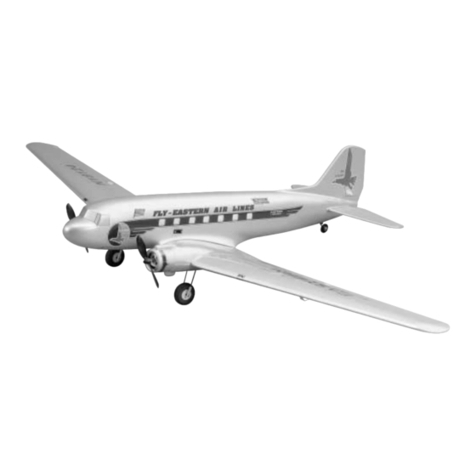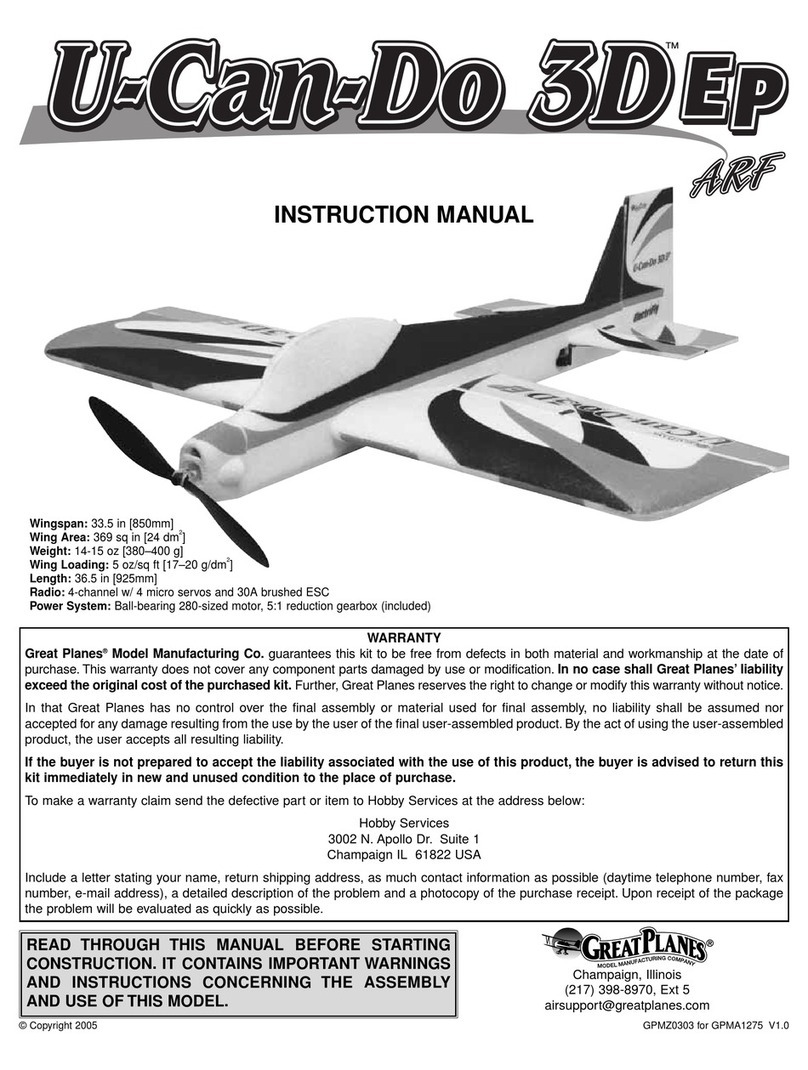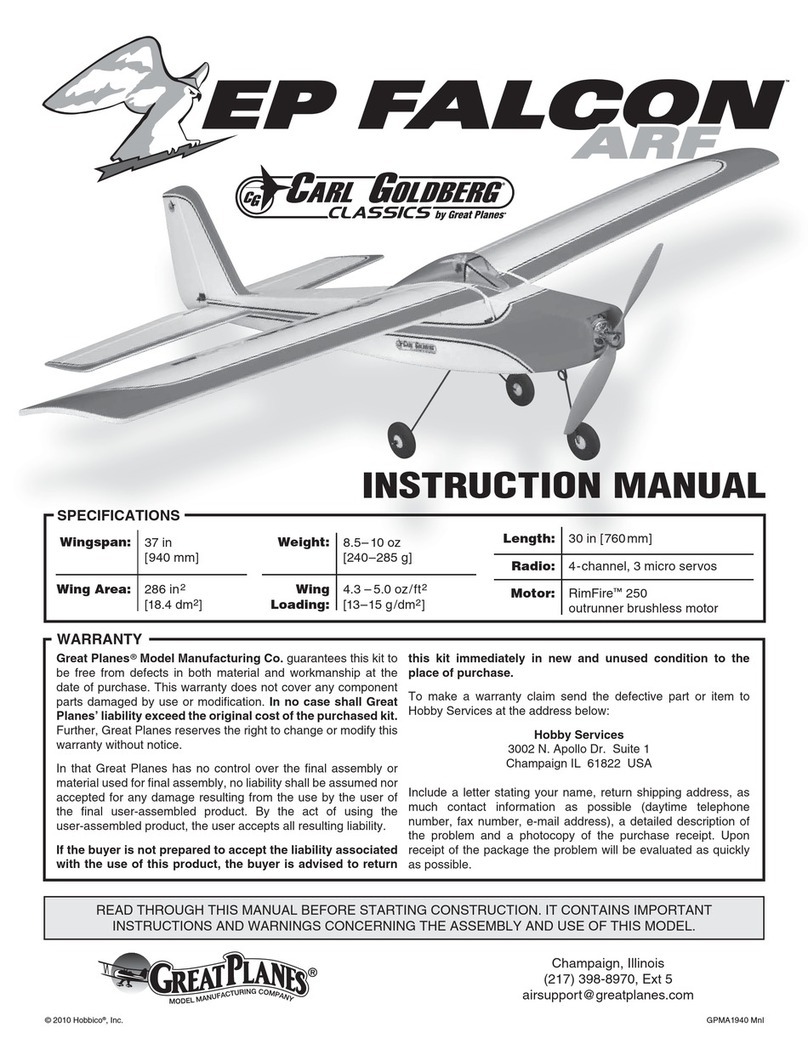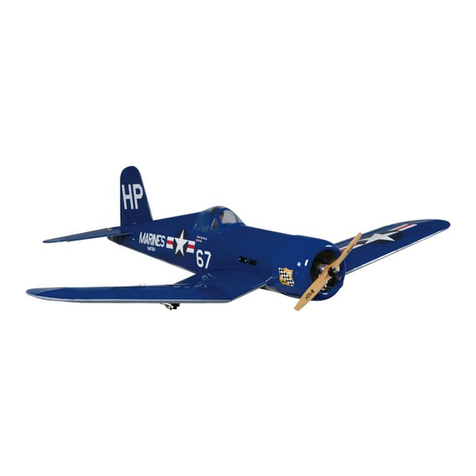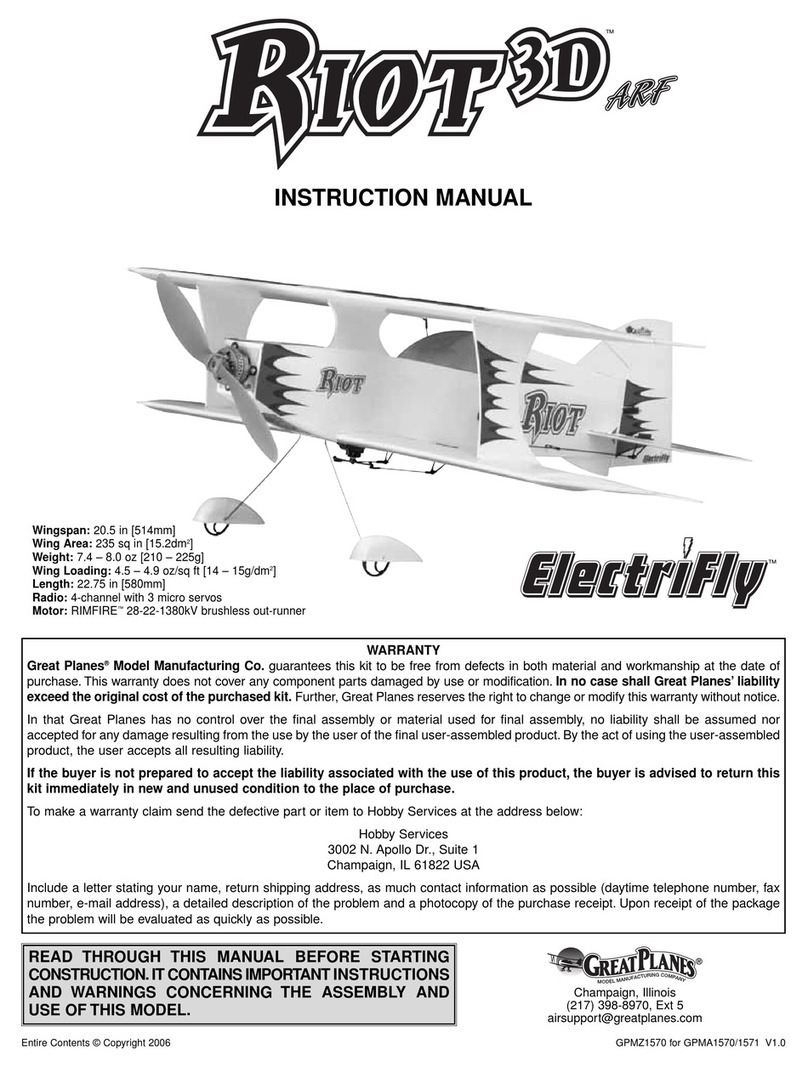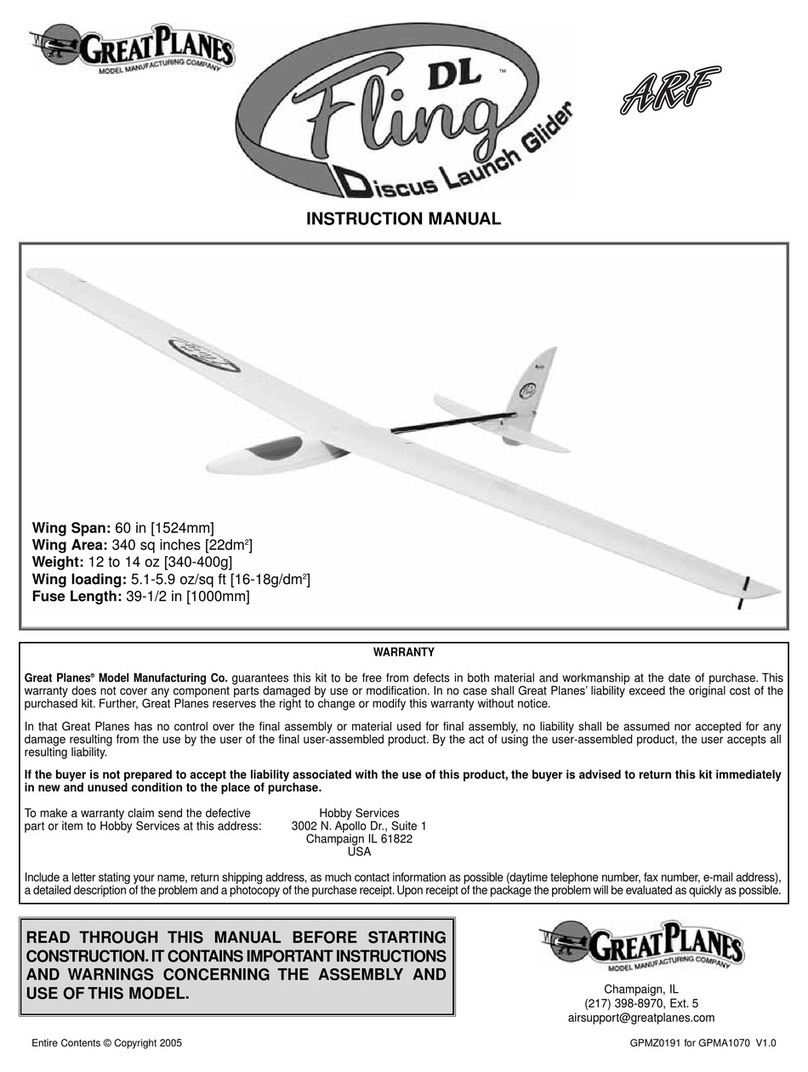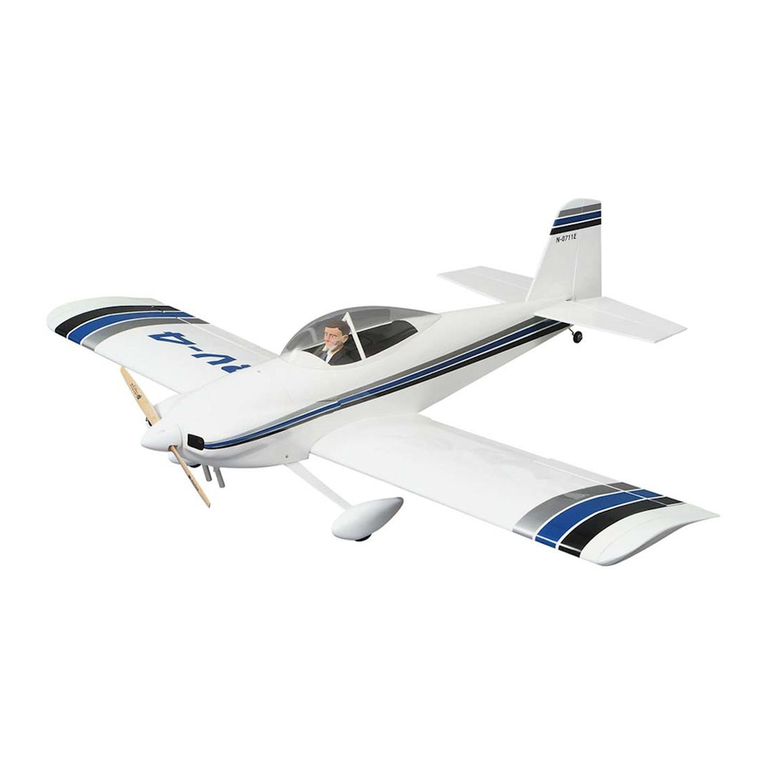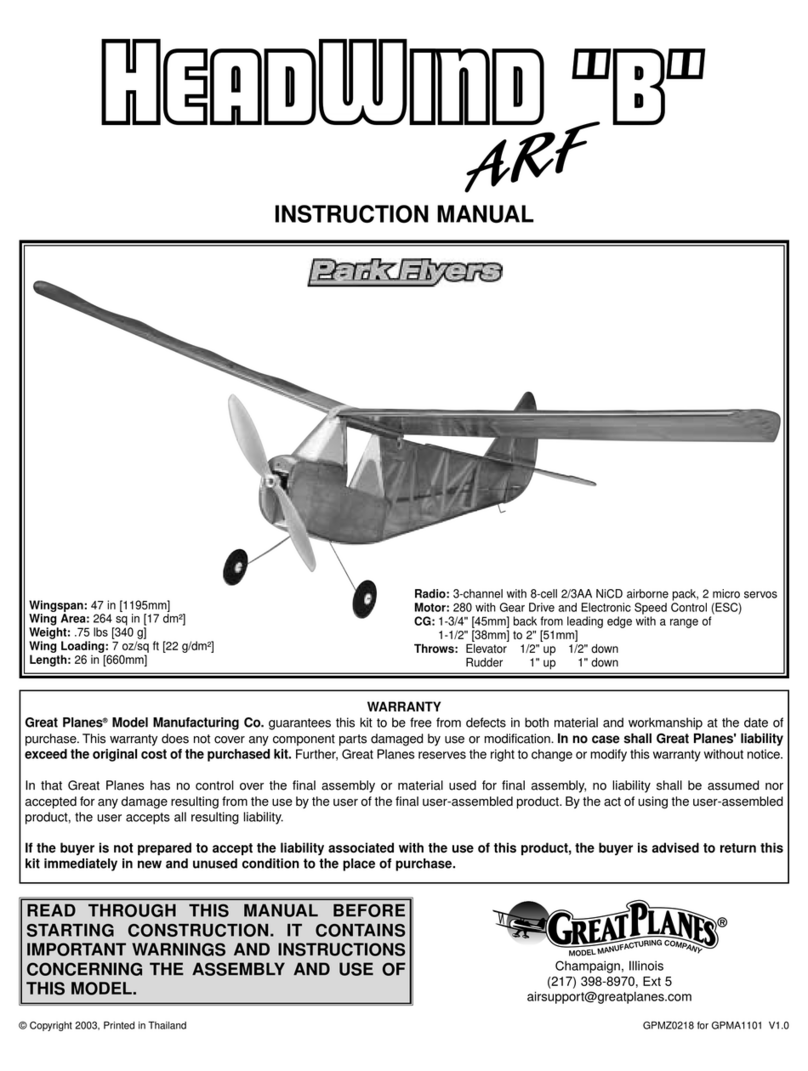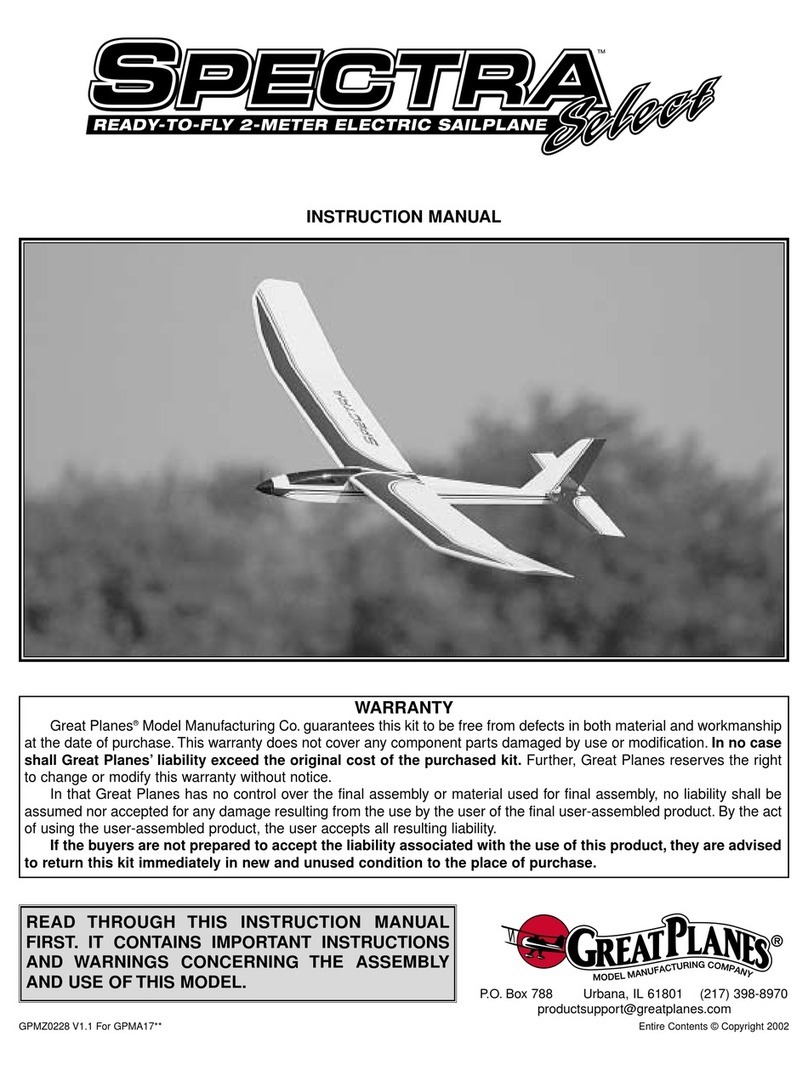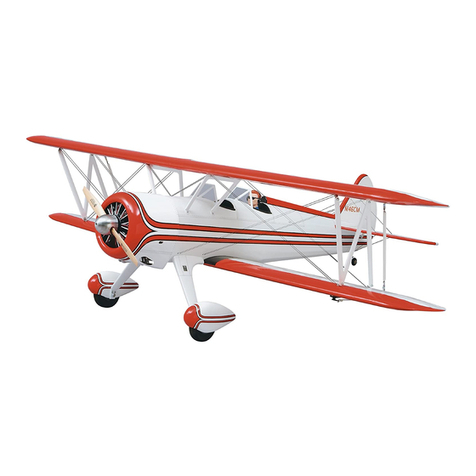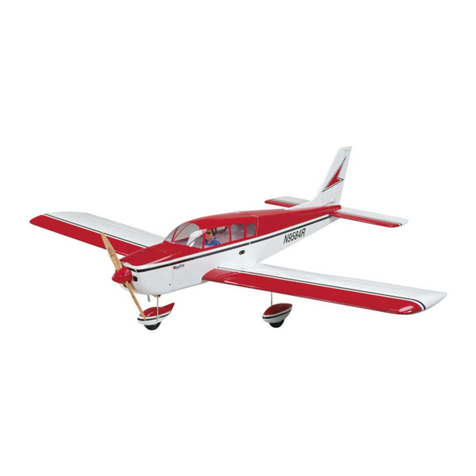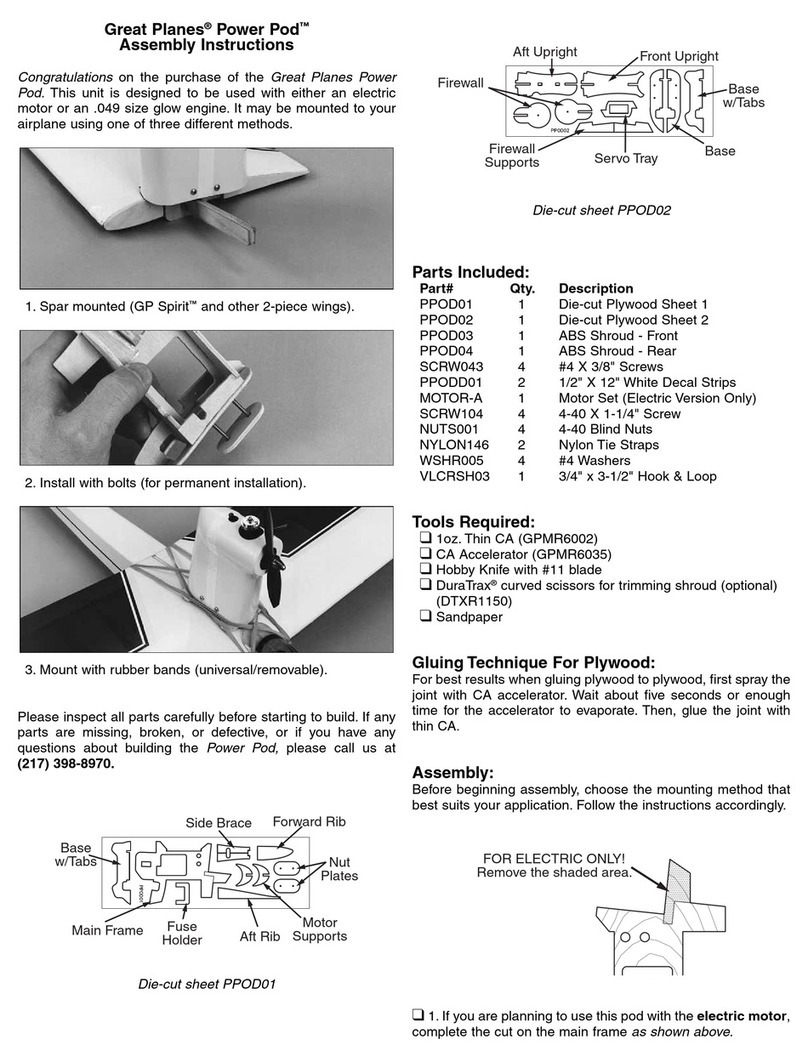
2
TABLE OF CONTENTS
INTRODUCTION ............................................................... 2
AMA .................................................................................. 2
SAFETY PRECAUTIONS ................................................. 3
LITHIUM BATTERY HANDLING AND USAGE ................ 3
DECISIONS YOU MUST MAKE........................................ 3
Radio Equipment and Electronics.............................. 3
Speed Control ............................................................ 3
Motor.......................................................................... 3
ADDITIONAL ITEMS REQUIRED .................................... 4
Adhesives & Building Supplies .................................. 4
Optional Supplies & Tools .......................................... 4
IMPORTANT BUILDING NOTES...................................... 4
ORDERING REPLACEMENT PARTS .............................. 4
KIT INSPECTION.............................................................. 5
KIT CONTENTS................................................................ 5
BEFORE YOU BEGIN ....................................................... 6
ASSEMBLE THE AIRPLANE ........................................... 6
GET THE MODEL READY TO FLY ................................... 9
Check the Control Directions ..................................... 9
Set the Control Throws .............................................. 9
Balance the Model (C.G.)......................................... 10
PREFLIGHT .................................................................... 11
Identify Your Model................................................... 11
Charge the Batteries ................................................ 11
Range Check ........................................................... 11
AMA SAFETY CODE (Excerpts) ................................... 11
CHECK LIST................................................................... 11
FLYING..............................................................Back Cover
Launch .......................................................Back Cover
Flight ..........................................................Back Cover
Landing ......................................................Back Cover
INTRODUCTION
Welcome to the exciting world of EDF (Electric Ducted Fan)
airplanes! Continuing on the great success of the first pair
of planes to use the Great Planes EDF unit, the MiGLET
and the XPD-8, comes a sleek new design with a racing
paint scheme. Molded in finger grips on the underside of the
plane will allow you or a partner to launch the plane into the
air, while the thrust of the EDF unit immediately increases
airspeed to climb to altitude. After the flight, the magnetic
canopy hatch removes easily for a fast battery pack change.
For the latest technical updates or manual corrections to
the Synapse ARF visit the Great Planes web site at www.
greatplanes.com. Open the “Airplanes” link, then select
the Synapse ARF. If there is new technical information or
changes to this model a “tech notice” box will appear in the
upper left corner of the page.
AMA
We urge you to join the AMA (Academy of Model Aeronautics)
and a local R/C club.The AMA is the governing body of model
aviation and membership is required to fly at AMA clubs.
Though joining the AMA provides many benefits, one of the
primary reasons to join is liability protection. Coverage is not
limited to flying at contests or on the club field. It even applies
to flying at public demonstrations and air shows. Failure to
comply with the Safety Code (excerpts printed in the back of
the manual) may endanger insurance coverage. Additionally,
training programs and instructors are available at AMA club
sites to help you get started the right way. There are over
2,500 AMA chartered clubs across the country. Contact the
AMA at the address or toll-free phone number below.
Academy of Model Aeronautics
5151 East Memorial Drive
Muncie, IN 47302
Tele: (800) 435-9262
Fax (765) 741-0057
Or via the Internet at:
http://www.modelaircraft.org
IMPORTANT!!! Two of the most important things you can do
to preserve the radio controlled aircraft hobby are to avoid
flying near full-scale aircraft and avoid flying near or over
groups of peple.
PROTECT YOUR MODEL, YOURSELF
& OTHERS...FOLLOW THESE
IMPORTANT SAFETY PRECAUTIONS
1. Your Synapse ARF should not be considered a toy, but
rather a sophisticated, working model that functions very
much like a full-size airplane. Because of its performance
capabilities, the Synapse, if not assembled and operated
correctly, could possibly cause injury to yourself or spectators
and damage to property.
2.Youmustassemblethemodel accordingtotheinstructions.
Do not alter or modify the model, as doing so may result in an
unsafe or unflyable model. In a few cases the instructions may
differ slightly from the photos. In those instances the written
instructions should be considered as correct.
3. You must take time to build straight, true and strong.
4. You must correctly install all R/C and other components so
that the model operates correctly on the ground and in the air.
5. You must check the operation of the model before every
flight to insure that all equipment is operating and that the
model has remained structurally sound. Be sure to check
pushrod connectors or servo arms often and replace them if
they show any signs of wear or fatigue.
